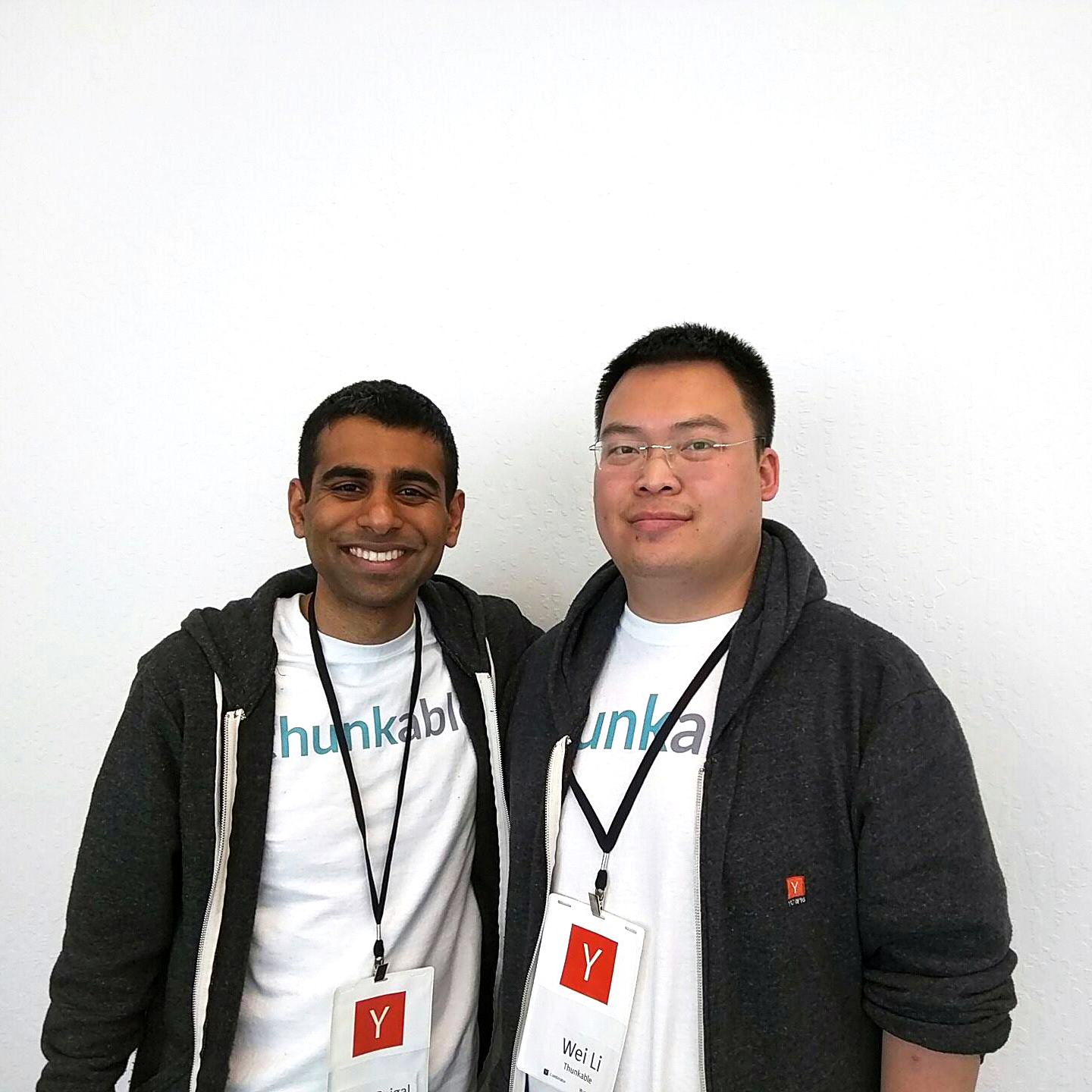Building Apps – No Coding Required
-
-
Slice of MIT
Filed Under
Recommended

Mobile apps can do just about anything these days. Adjust the heat in your home, control a robot, diagnose a leaky window, figure out why your check engine light is on, and detect food spoilage. With more than five million mobile apps in the top app stores, the numbers keep growing. As new uses arise daily, Arun Saigal ’13, MEng ’13 and WeiHua Li ’14, MEng ’16, are giving people the power to create the apps they need—even those with no experience coding.
Thunkable, a startup that makes a drag-and-drop tool to build beautiful native mobile applications, was born from the MIT App Inventor platform. The tool, which was originally intended for educators to help teach kids to code, outgrew the resources of academia so Saigal and Li started their free app builder in 2015.
Saigal was initially inspired to create a method for building apps for those without a background in coding because of a MISTI internship. “During the 2009-2010 IAP, I was volunteering with MISTI India helping rural students learn how to code,” says Saigal. “These students were not familiar with computers, but they were completely fluent with smartphones. This is a very common trend in developing countries. I started thinking, if these students could easily use mobile technology, why shouldn’t they be able to create their own mobile technology?”
When Saigal returned to MIT and learned that EECS professor Hal Abelson was working on a product to build mobile apps for people who didn’t know how to code, he joined and became the first student to work on MIT App Inventor, with Li following shortly after. After several years of great success, they realized that the majority of app builders weren’t students, as it had been intended, they were individuals trying to build commercially viable apps.
When they split off, they wanted to keep the focus on making the technology accessible to everyone. “For a long time, computers were highly specialized pieces of technology that only highly trained professionals were able to use,” says Saigal. “The personal computer revolution made computers accessible to anyone. This revolution hasn’t happened yet in the world of building mobile apps, and that is what we are focusing on.”
Within a month of publicly launching Thunkable in early 2016, they had more than 50,000 users. “Since then,” says Saigal. We have seen 275,000 users build over 750,000 apps in nearly every country in the world.”








